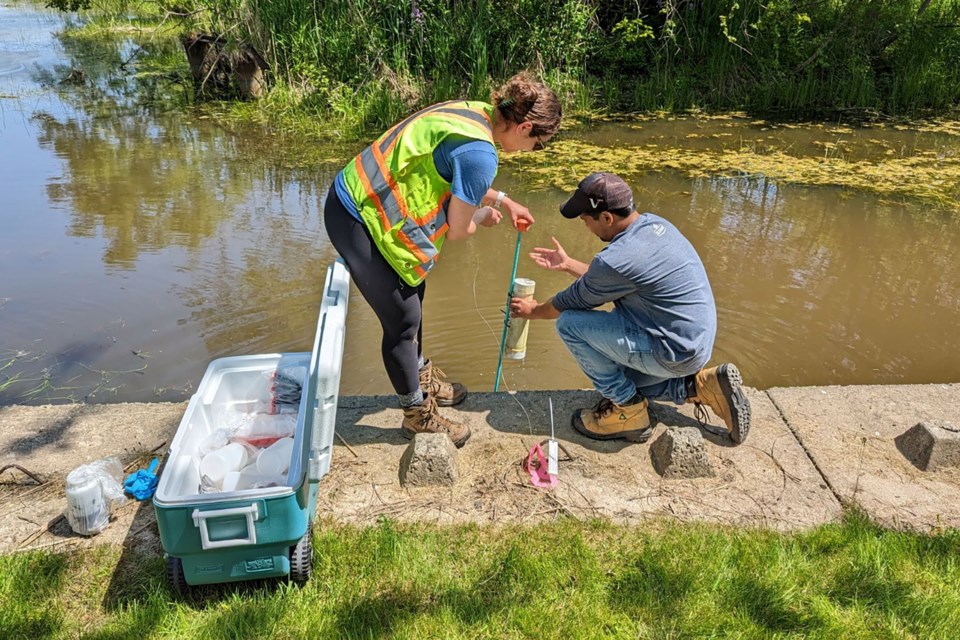NEWS RELEASE
BROCK UNIVERSITY
*************************
The prevalence of blue-green algae blooms in southern Ontario will become more frequent as temperatures rise, say Brock University researchers.
The hot, dry periods from June to August create perfect conditions for harmful algae to grow, impacting fish populations and potentially putting human and pet health at risk.
Brock researchers Vaughn Mangal, assistant professor in the Department of Chemistry, and Kelly Biagi, assistant professor in the Department of Earth Sciences, are investigating what nutrients are entering the water that contribute to uncontrollable algae growth and the neurotoxins that shut down beaches and recreational water activities.
“These harmful algae blooms are triggered by excess nutrients, primarily phosphorus and nitrogen, from agricultural activities, such as applied fertilizers that runoff from the land to waterways,” says Mangal. “The need for interventions and management from municipalities and provincial governments will continue to grow to help regulate how much fertilizer is used.”
The Niagara region and Greater Toronto and Hamilton Area is a hub for human activity with a lot of agriculture, cargo ships and industrial effluents discharging inorganic pollutants and excess nutrients in harbours, lakes and waterways, Mangal says.
Understanding how contaminants, including excess nutrients, move from land to water is a major focus of Mangal and Biagi’s research.
With expertise in hydrology, Biagi studies how water physically moves through ecosystems, which includes all components of the water cycle from precipitation and evaporation to water flow through rivers, wetlands and groundwater.
“Water drives the movement of contaminants, so we need to understand how water is moving through these agricultural landscapes to determine where excess nutrients are entering waterways and quantify their concentration,” she says. “Knowing this can help identify where to focus management strategies for problematic algae blooms.”
Mangal — who has extensive experience looking at algae biomarkers, contaminant cycling and analytical chemistry — and Biagi are currently doing fieldwork at the Wignell Drain in Port Colborne as part of a study on factors contributing to algae blooms.
This year’s rain has made algae blooms more sporadic, whereas the summer of 2022 was hot and dry. This led to one big algae bloom in 2022 that later subsided, he says.
Recent research in southern Ontario shows that large rain and snowmelt events lead to some of the largest nutrient inputs to waterways.
“Climate change is expected to increase the severity and frequency of storms, which will likely enhance the movement of excess nutrients to waterways, and subsequent harmful algae blooms will only continue to increase over time,” Biagi says.
When algae die, the bacterial decomposition uses up oxygen from water that fish need to breathe. The decaying algae become slimy and odorous while removing oxygen from the water, ultimately shutting down the ecosystem.
Mangal suggests municipal governments should begin to regulate fertilizer use and continue to explore alternatives to traditional synthetic fertilizers that wash from land to water.
“If we don’t begin to regulate fertilizer use and the amount of nutrients going across the terrestrial, aquatic interface, conditions for harmful algae growth will continue,” he says.
Mangal has conducted algae research in Hamilton Harbour, Bay of Quinte, Port Colborne and Dryden, Ont., as well as Churchill, Man.
Biagi’s research into how human disturbances impact water quality has focused on southern Ontario, Nova Scotia and the Athabasca oil sands region in Alberta.
************************



